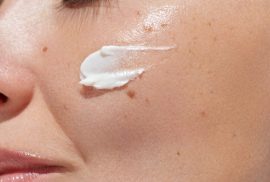How Eating Microgreens Can Benefit Your Skin
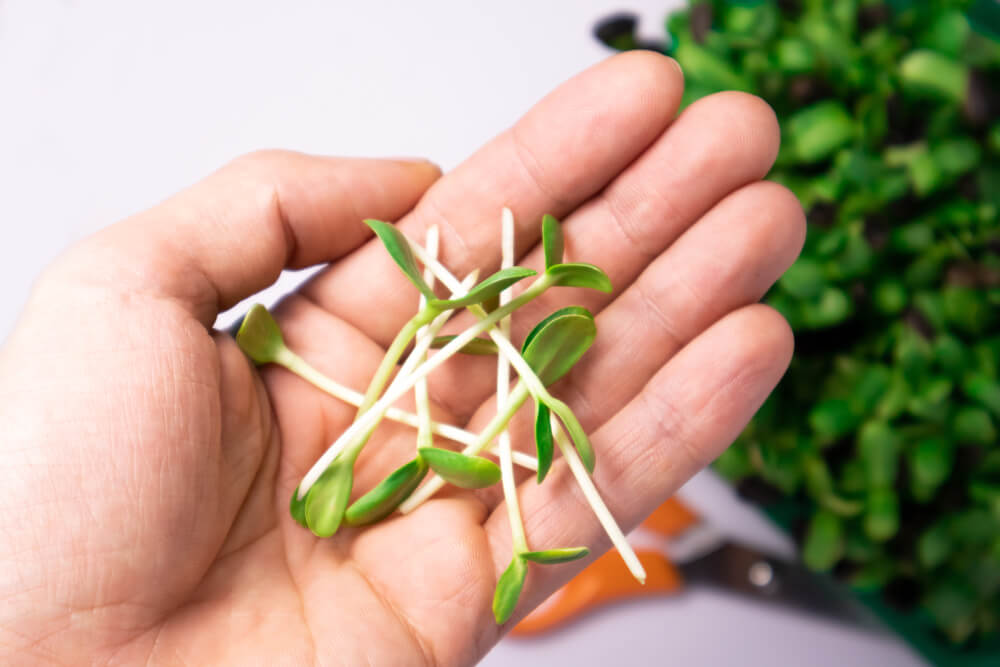
Even if you don’t usually pay attention to food trends, chances are that you’ve heard of microgreens. These tiny, mini-plants have been in the limelight quite a bit recently, mostly due to how surprisingly nutrient-dense they are.
It’s common knowledge that the foods you eat directly impact your skin, but what changes can you expect to see if you start adding more microgreens into your diet?
Here’s everything you need to know…
What Exactly are Microgreens?
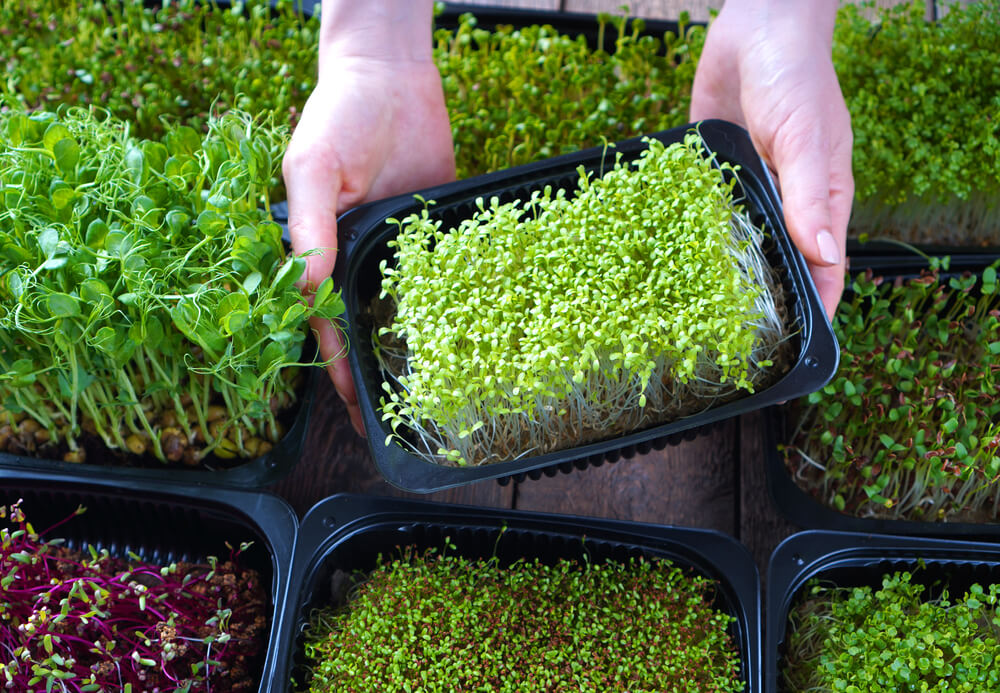
For those who aren’t familiar with the term, microgreens are very young vegetable or herb plants. Rather than allowing these plants to mature, microgreens are harvested when they are just a few centimeters tall.
Many would assume that mature vegetables contain more nutrients than their young green counterparts, but this isn’t true at all…
Although small, microgreens are packed with a highly concentrated level of nutrients. Of course, this varies depending on the vegetable, but most are packed with plenty of:
- Vitamins – vitamin A to K can be found in microgreens. Many also contain carotenoids, which aren’t technically a vitamin but are converted into vitamin A once absorbed by the body. As you probably already know, vitamin A is a game-changer when it comes to skin care
- Minerals – there are several minerals found in microgreens, but the most common are potassium, zinc, copper, magnesium, and iron
- Antioxidants – these are incredibly important for your skin, as well as for all of the other cells in your body. Polyphenols in particular are worth knowing about – these are a powerful group of antioxidants, and many microgreens contain unique types of these. For example, Red Russian Kale is packed with 164 different types!
In fact, most microgreens actually contain higher nutrient levels than that of their mature alternatives. Some studies have found these to be up to nine times higher!
How is this possible?
Science isn’t 100% sure yet, but experts believe that it all comes down to the way in which microgreens are harvested while they are still young. This means that they contain all of the nutrients needed for the plant to grow, but don’t actually use them up in the growing process, leaving them for you to obtain maximum benefits.
Microgreens vs Sprouts
Sprouts are another popular superfood, and many often confuse them with microgreens. However, the two are quite different…
Sprouts are seeds that have recently germinated. They don’t have much in terms of leaves, but you can eat the seeds of sprouts too.
Since sprouts are a younger form of microgreens, they’re ready to eat in just a few days. On the other hand, microgreens take a couple of weeks to grow before they are ready to eat. However, microgreens tend to be more flavorful, whereas sprouts are more about texture, thanks to their delicious crunch.
When it comes down to it, both are extremely beneficial for both your overall health and your skin.
How Do Microgreens Benefit the Skin?
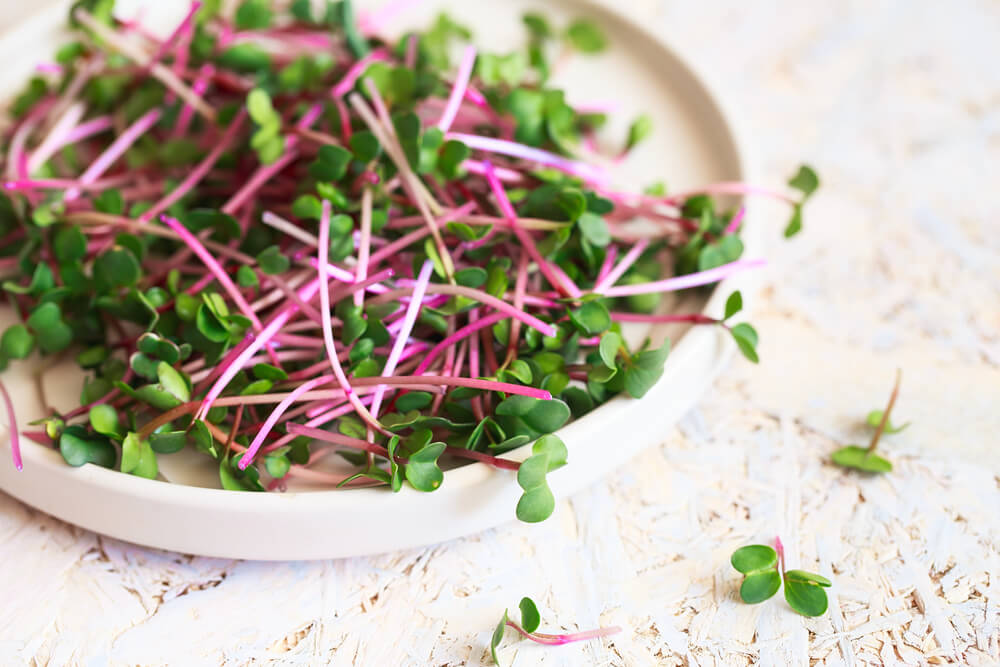
Want to know how your skin would benefit if you were to start eating more microgreens?
Here’s what you can expect:
A Reduction in Fine Lines and Wrinkles
These days, everyone’s looking to fight the signs of aging, and microgreens are something that can help you to do this.
Wondering how that works?
It all comes down to the polyphenol content of microgreens. Polyphenols are an extremely powerful group of antioxidants.
Antioxidants help your skin to produce collagen and elastin, which are the main proteins responsible for keeping your skin smooth, firm, and tight. They also help to prevent existing collagen and elastin fibers from breaking down, which commonly happens due to everything from sun exposure to pollution.
The more collagen you have, the smoother and younger your skin will look, and antioxidants are key in making this happen.
Fewer Acne Breakouts
Acne is triggered by inflammation in the skin, and this is something that eating microgreens can help to reduce.
Again, the anti-inflammatory effects of microgreens can be attributed to the antioxidants within these tiny plants. By reducing inflammation, they also reduce the frequency and severity of breakouts, leaving you to enjoy a clear and healthy complexion.
Of course, the anti-inflammatory effects of microgreens aren’t limited to acne…
Other skin conditions that are caused by inflammation are likely to improve too, whether this may be psoriasis, rosacea, or anything else.
Less Sun Damage
The sun has devastating effects on your skin. Not only is it responsible for the majority of facial wrinkles, but it also leads to discoloration and dark spots.
While wearing sunscreen throughout the year is a must, some level of sun damage is unavoidable. This means that it’s always worthwhile trying to help your skin repair itself as much as possible.
How can you do this?
There are several ways, one of which is to eat more foods that are rich in antioxidants, such as microgreens.
Antioxidants stimulate blood flow to the skin, which means that your skin then receives a greater amount of oxygen and nutrients. This enables it to produce new skin cells at a faster rate, while also repairing any damage that the sun has caused to older cells.
The Other Health Benefits That Microgreens Bring
As you can imagine, all of those vitamins and antioxidants not only do great things for the skin, but also for a person’s overall health.
Everyone already knows that eating vegetables is a must in order to remain healthy, and microgreens usually contain even more nutrients, making them capable of giving your body a massive boost.
How?
In the following ways:
- The polyphenols in microgreens lower the levels of bad cholesterol in your body, which then reduces your risk of heart disease
- The antioxidants in microgreens help to enhance the way in which cells in the body absorb sugar, which can help with diabetes
- The polyphenols in microgreens are able to lower your risk of developing a number of different types of cancers
The Best Microgreens for Your Skin

There are hundreds, if not thousands, of microgreen options out there. If you’re planning on growing your own, how do you know which ones to pick?
Well, when it comes to your skin, these are the best microgreens to go for:
- Sunflower – these are packed with vitamins A, B, D, and E, as well as a number of other nutrients, including beta-carotene
- Pea shoots – these contain seven times more vitamin C than blueberries and eight times more folic acid than beansprouts
- Radish – along with their peppery taste, radish microgreens are packed with folate and vitamin B6, plus carotene too
- Broccoli – in addition to a wide range of vitamins, broccoli microgreens also contain a compound called sulforaphane. This has the incredible ability to target cancer cells, including skin cancer
- Beets – not only are they colorful, but beet microgreens have the unique ability to reduce stress, which can really help to calm so many skin conditions
- Kale – just like its mature alternative, kale microgreens are considered to be one of the most nutrient-dense foods in the world
How to Add Microgreens to Your Diet
Ideally, you should have access to fresh microgreens. This is easier than it sounds, since microgreens are so quick and simple to grow at home (more on this further down).
If this isn’t possible, or you simply want to give microgreens a try for the first time, many stores now sell them too. However, keep in mind that nutrient levels are much higher when microgreens are eaten fresh.
This not only applies to microgreens, but to just about every vegetable out there. Take spinach, for example. It loses about 90% of its vitamin C content in the first 24 hours of being picked, meaning that you gain so much more from eating freshly-harvested homegrown spinach compared to what you would buy from the store.
Just like with many other vegetables, microgreens are at their best when eaten raw. This not only allows them to retain more of their nutrients, but it also gives you that fresh and delicate flavor, which is otherwise lost in the cooking process.
Try using microgreens as a garnish for just about any dish you cook, or add them to salads and sandwiches for a crisp texture.
If you still want to try cooking with microgreens, then, again, they are extremely versatile. Use them as you would any other leafy green, whether this may be steaming or stir frying. However, don’t forget that since microgreens are so delicate, they only need to be cooked for a few seconds.
Want to get really creative?
Try adding microgreens to mocktails and cocktails for a deliciously fresh twist!
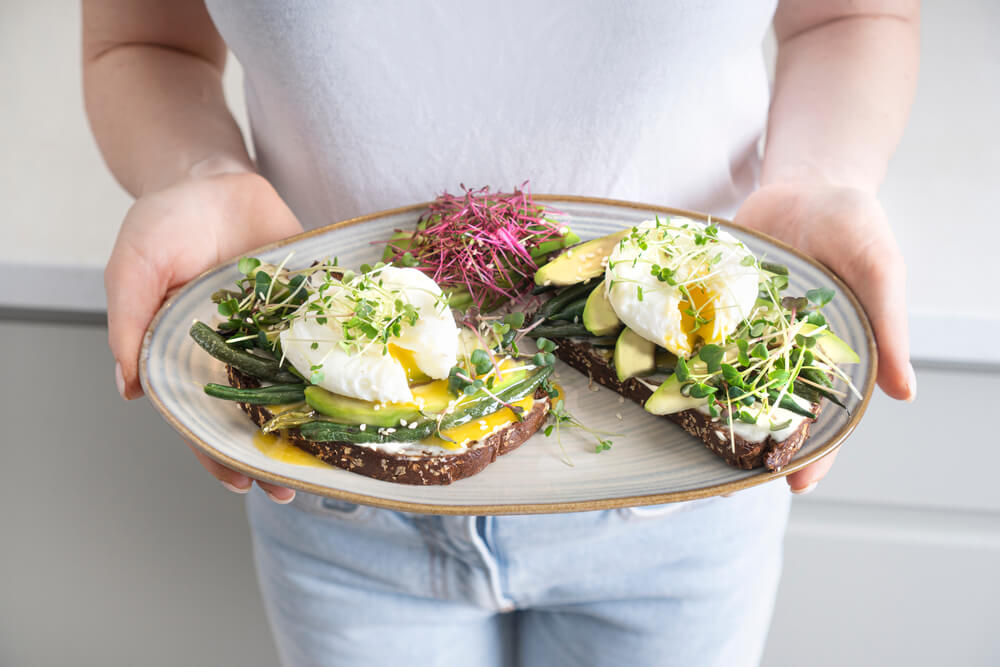
Using Microgreens Topically
As you now know, eating microgreens does great things for the skin. However, you’re probably wondering if there is any way in which you could use them topically too…
The answer is yes! Many brands are now incorporating microgreens into their skin care formulas. Look hard enough and you’ll find them in everything from cleansers to serums to creams.
You also have the option of making your own DIY microgreens skin care product. The easiest way to do this is with a face mask – simply mix together some blended microgreens with some honey. Apply this to your skin and leave for 10-15 minutes, before washing off any following up with your favorite moisturizer.
The benefit to using microgreens topically is that this enables the outer layers of your skin cells to make the most of all of those nutrients.
However, don’t be tempted to only use them topically and skip them out from your diet…
Most topical products don’t penetrate far enough into the skin to nourish the deepest layers of skin cells. The only way to reach these is from within, which is why eating your nutrients is just as, if not more, important than using them topically.
Growing Your Own Microgreens
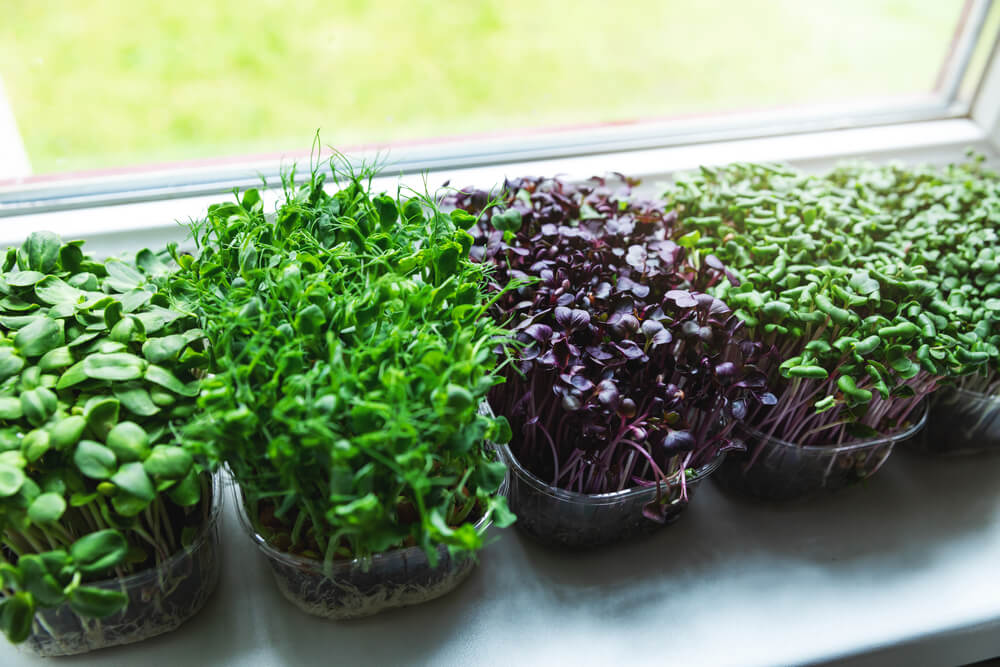
Microgreens are so easy to grow, even if you’ve never grown anything before in your life. You don’t need much space either – a small container on a sunny windowsill is perfect for getting started.
Here’s what you’ll need to get growing:
- A container filled with a quality compost. This can easily be purchased from any garden center – just look for a multi-purpose mix.
- Seeds. You’ll find many seed packets containing microgreen mixes, but these are usually pricier and aren’t necessary. Instead, try making your own mix by purchasing a few different vegetable seeds and then combining them. Pick some of the vegetables mentioned earlier for the biggest skin boost.
How to Grow Microgreens:
- After filling your container with soil, lightly water it.
- Sprinkle your seeds over the top in a single, even layer.
- Lightly cover the seeds with a bit more soil – keep your seeds very near to the surface.
- Mist your seeds and, if you have one, cover your container with a plastic lid. This will speed up the germination process.
- It will only take a few days for your seeds to germinate. Keep them consistently moist – this may mean spraying them every day or two.
- Your microgreens should be ready to harvest about ten days after they have germinated.
How to Harvest Microgreens
Don’t be tempted to pull your microgreens out from the soil.
All you need to do is use a pair of scissors to snip your greens away, keeping your cuts close to the surface of the soil. Many microgreens will then regrow from their roots, giving you a second, and maybe even a third and fourth, harvest.
Summary
With microgreens being so beneficial to both your skin and the rest of your body, it only makes sense to start incorporating them into your diet as much as possible. Yes, they may be pretty costly when bought from the shops, but microgreens cost a fraction of the price when grown at home, with homegrown versions being so much more nutrient-dense and flavorful too!



